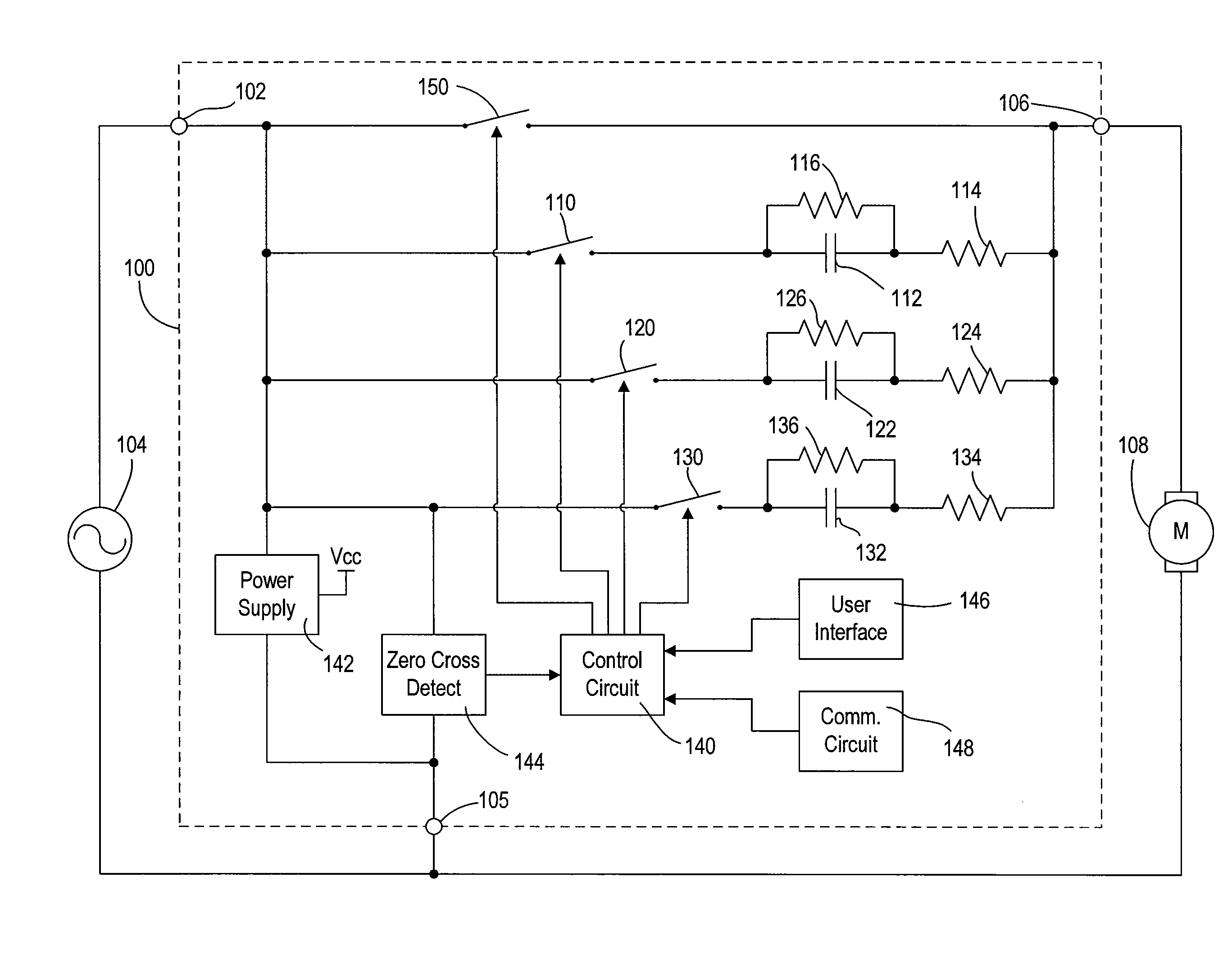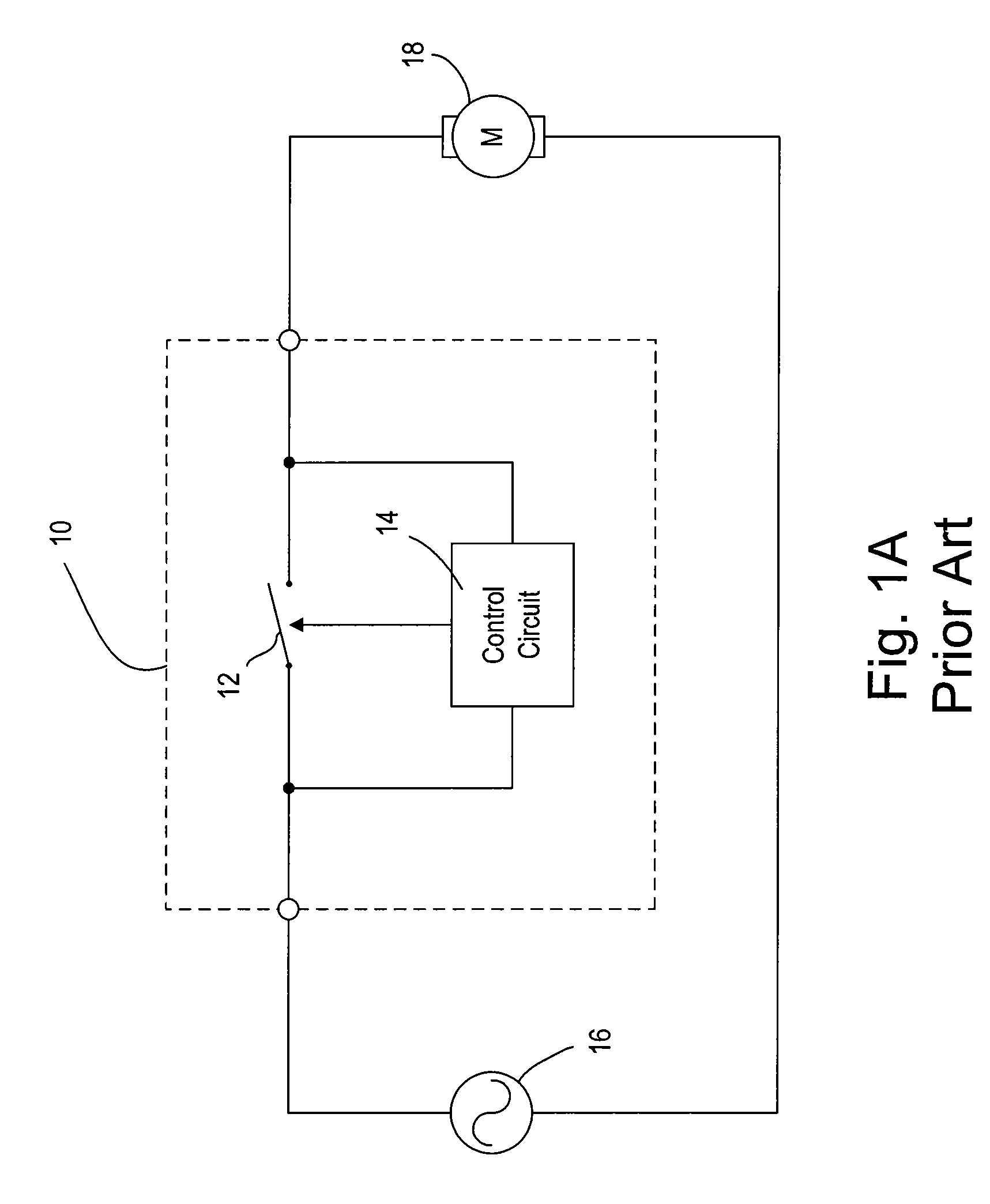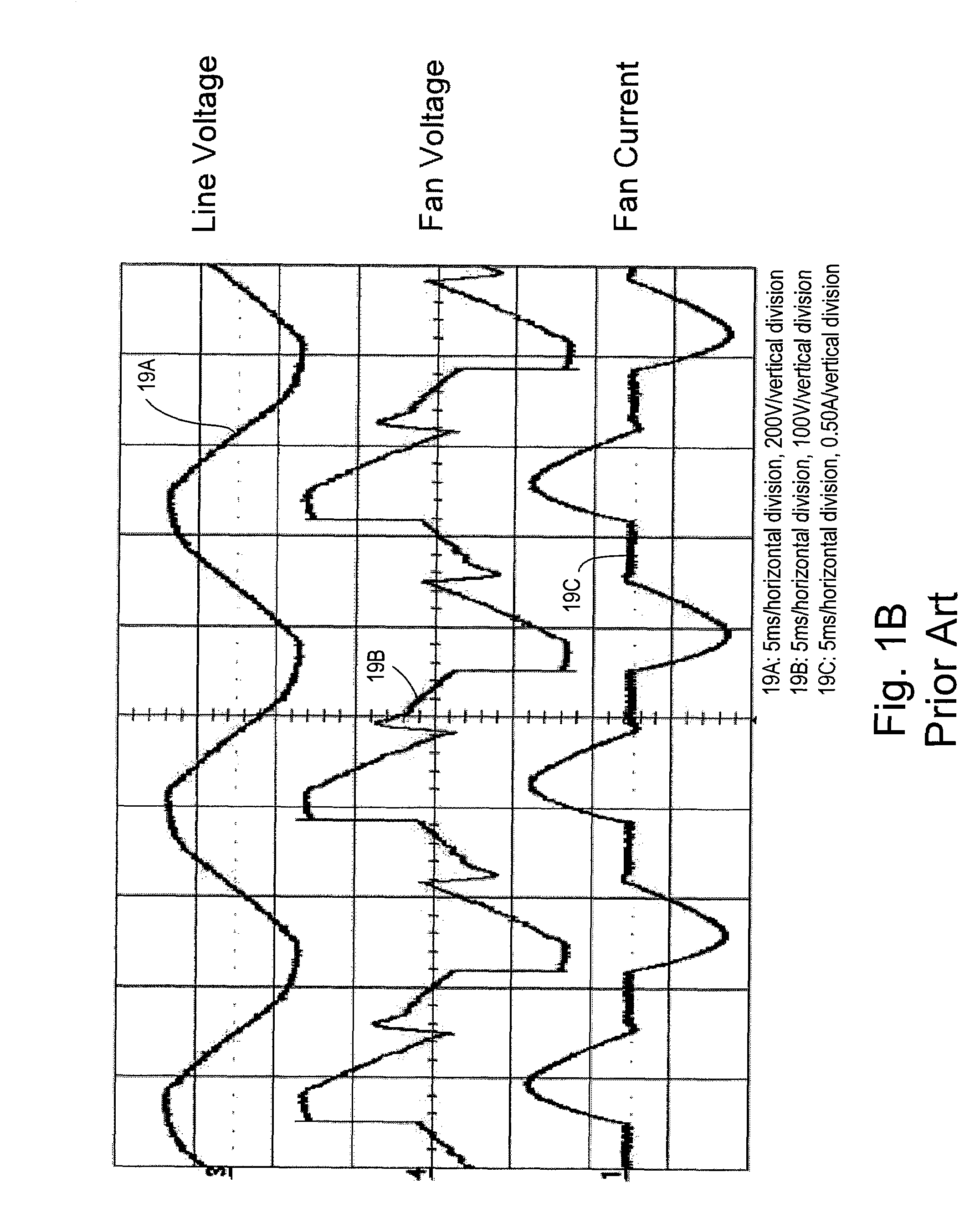Method and apparatus for quiet fan speed control
a fan speed control and fan motor technology, applied in the direction of motor/generator/converter stopper, dynamo-electric converter control, starter details, etc., can solve the problems of generating mechanical and annoying and distracting, and producing substantial amounts of acoustic noise in the fan motor
- Summary
- Abstract
- Description
- Claims
- Application Information
AI Technical Summary
Benefits of technology
Problems solved by technology
Method used
Image
Examples
second embodiment
[0050]In a second alternative method, the voltages across the capacitors 112, 122, 132 are monitored to determine when to turn off the switches 110, 120, 130. FIG. 6A is a simplified schematic diagram of a quiet fan speed control 300 according to the present invention. The fan speed control 300 includes a voltage compare circuit 350, which is operable to receive the voltages across each of the capacitors 112, 122, 132. FIG. 6B is a simplified schematic diagram of a possible implementation of the voltage compare circuit 350. The voltage compare circuit 350 comprises three comparator circuits 360, 370, 380 for comparing each of the voltages across the capacitors 112, 122, 132 to a reference voltage VREF1, VREF2, VREF3, respectively. The first comparator circuit 360 includes a comparator 362 with the reference voltage VREF1 connected to the negative input. The voltage across the capacitor 112, 122, 132 is received through a diode 364 during the positive half-cycles of the motor current...
third embodiment
[0051]In a final alternative embodiment, the control circuit 140 is operable to monitor the motor current IM through the fan motor 108 in order to control the switches 110, 120, 130. FIG. 6C is a simplified schematic diagram of a quiet fan speed control 400 according to the present invention. The fan speed control 400 includes a voltage monitor circuit 490, which provides to the control circuit 140 a signal representative of the zero-crossings of the voltage across the limiting resistors 116, 126, 136, and thus the zero-crossings of the motor current IM. Accordingly, the control circuit 140 is operable to turn off the switches 110, 120, 130 at the zero-crossings of the motor current IM.
[0052]To start up the fan motor 108 from off to a substantially low speed (e.g., speed #1 or speed #2 of Table 1) without generating excessive acoustic noise in the fan motor, the fan speed control 100 of the present invention first turns on the fan motor to an intermediate speed, i.e., not the maximu...
PUM
 Login to View More
Login to View More Abstract
Description
Claims
Application Information
 Login to View More
Login to View More - R&D
- Intellectual Property
- Life Sciences
- Materials
- Tech Scout
- Unparalleled Data Quality
- Higher Quality Content
- 60% Fewer Hallucinations
Browse by: Latest US Patents, China's latest patents, Technical Efficacy Thesaurus, Application Domain, Technology Topic, Popular Technical Reports.
© 2025 PatSnap. All rights reserved.Legal|Privacy policy|Modern Slavery Act Transparency Statement|Sitemap|About US| Contact US: help@patsnap.com



